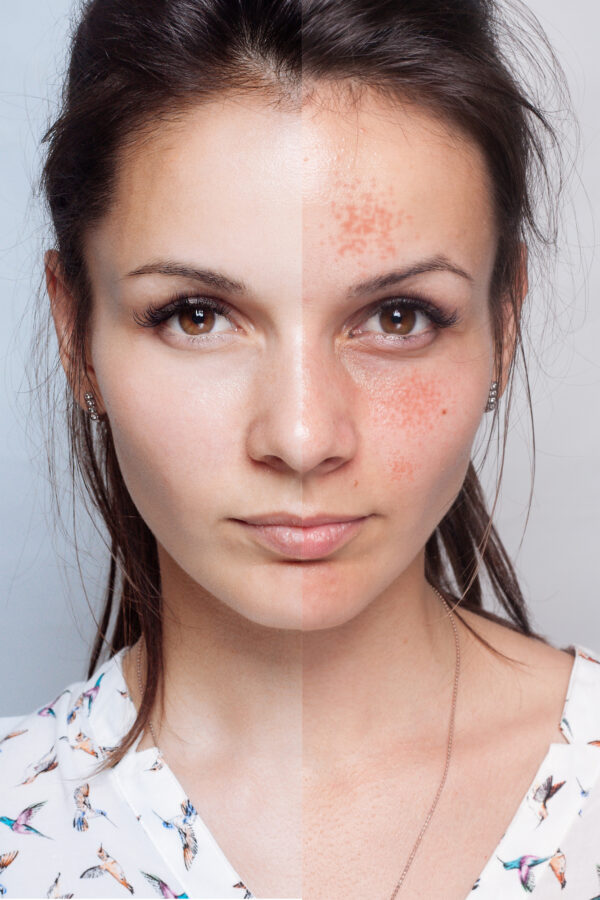
For those who suffer from acne scars, dermal fillers have just emerged as a potentially life-changing treatment option.
The continuum of acne management goes beyond the initial problem of cutaneous flaws because lingering scars remain a major worry. In the pursuit of a holistic remedy, dermal fillers emerge as a sophisticated therapeutic intervention, exhibiting the potential to ameliorate acne scars and enhance overall facial aesthetics. This discourse delves into the realm of dermal fillers, elucidating their efficacy in mitigating acne scars and bestowing a renewed luminosity upon individuals.
Comprehending Dermal Fillers for Acne Scars
Dermal fillers, acknowledged as soft-tissue augmentation agents, comprise gel-like formulations meticulously injected into regions impacted by acne scars. These fillers boast a composition blending biocompatible natural and synthetic materials, ensuring their cutaneous safety. Beyond their immediate impact on skin texture, dermal fillers play a pivotal role in eliciting collagen production and imparting volume. This dual modality effectively counteracts the deleterious effects of inflammatory acne, particularly addressing atrophic or depressed scars.
The Therapeutic Procedure
Embarking on the path of dermal filler intervention necessitates a comprehensive consultation with a dermatologist. This critical step involves evaluating the individual’s cutaneous profile and discerning the most suitable type and quantity of fillers. The procedural sequence encompasses:
- Patch Test: Conducted to preempt allergies, a small amount of filler is injected into the arm, with subsequent monitoring for any adverse reactions.
- Marking: The dermatologist strategically marks facial areas earmarked for filler injection, ensuring precision during the therapeutic procedure.
- Local Anesthesia: Administered to minimize discomfort, local anesthesia precedes the commencement of the injection process.
- Injection: Employing a fine needle, the dermatologist meticulously administers the filler beneath the skin in the targeted areas, addressing acne scars.
- Multiple Injections: The process iterates as necessary, covering diverse facial regions impacted by acne scars.
The entire therapeutic procedure typically spans a duration of 15 to 30 minutes, culminating in the application of an ice pack to alleviate swelling. Immediate outcomes may be observable in certain instances, with a restoration of cutaneous volume in areas previously afflicted by profound scars.
Monetary Considerations
The financial outlay for dermal fillers designed for acne scars varies contingent on multiple factors, including filler composition, treated area dimensions, scarring severity, practitioner proficiency, and the geographic locale of the clinic. Individuals must take these factors into account when assessing the economic aspects of the therapeutic procedure.
Potential Risks and Adverse Effects
While dermal fillers are generally regarded as safe, potential risks and adverse effects necessitate consideration:
- Edema, Ecchymosis, and Erythema: Ubiquitous and typically transient, these effects tend to resolve autonomously.
- Hypersensitivity Reaction: Infrequent, particularly with fillers derived from bovine sources; allergy tests are routinely conducted to mitigate this risk.
- Hemorrhage: An incorrect injection may precipitate bleeding at the injection site.
- Vascular Compromise: An accidental injection into a blood vessel can lead to permanent cutaneous damage, underscoring the importance of adept practitioners.
- Facial Asymmetry: Novice practitioners may induce inappropriate filler placement, resulting in an uneven facial appearance.
- Nodule Formation: Fillers may incite an inflammatory response, generating nodules at the injection site. A comprehensive pre-treatment evaluation can help mitigate this risk.
- Filler Displacement: Fillers may migrate beneath the skin, resulting in an uneven appearance. Proficient injection techniques and expertise can minimize this risk.
Dentox Training Program
The Dentox training program is strongly recommended for medical professionals administering dermal fillers to address these potential risks and optimise patient outcomes. This program equips professionals with extensive knowledge and skills, emphasizing the mitigation of patient discomfort and expediting the recovery process during filler administrations.
Learn more about dermal fillers online at https://dentox.com/all-courses/dermal-fillers/. Participation in this program helps medical professionals keep up with the newest developments in their professions and become experts in such fields. Anyone interested in participating in live classes to interact with actual patients can do so at https://dentox.com/live-courses/.
In Conclusion
Dermal fillers emerge as a promising and transformative therapeutic solution for individuals contending with acne scars. Beyond the immediate enhancement in cutaneous texture, these fillers stimulate collagen production and reinstate volume, providing a multifaceted approach to scar reduction. When contemplating dermal fillers, individuals should evaluate potential risks, select experienced practitioners, and explore training programs like Dentox to ensure secure, efficacious, and resplendent outcomes. The journey to diminish acne scars metamorphoses into a personal and transformative experience, unlocking newfound confidence and revitalizing cutaneous luminosity.







